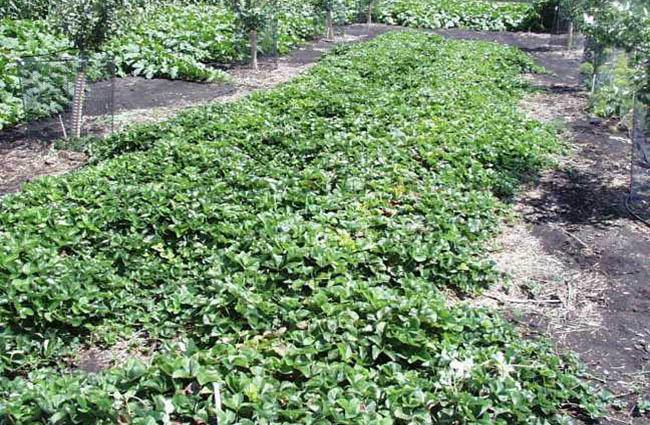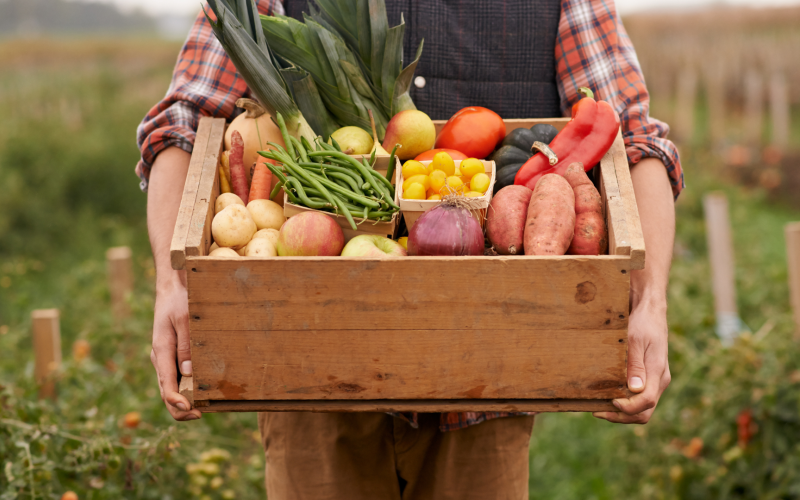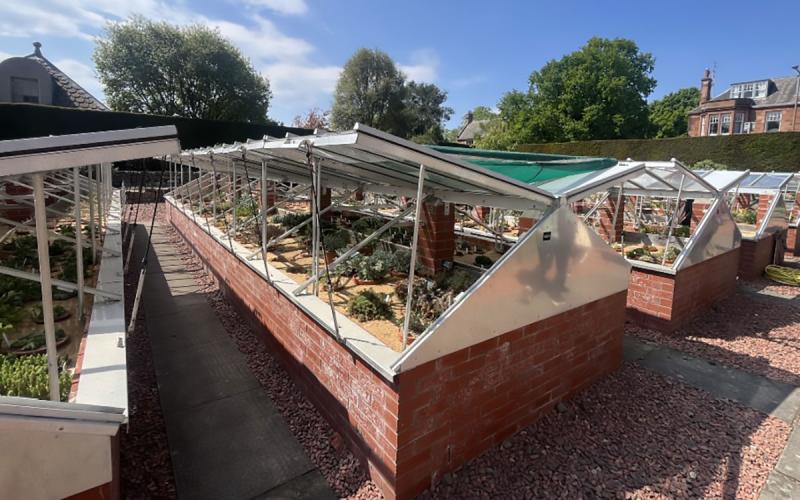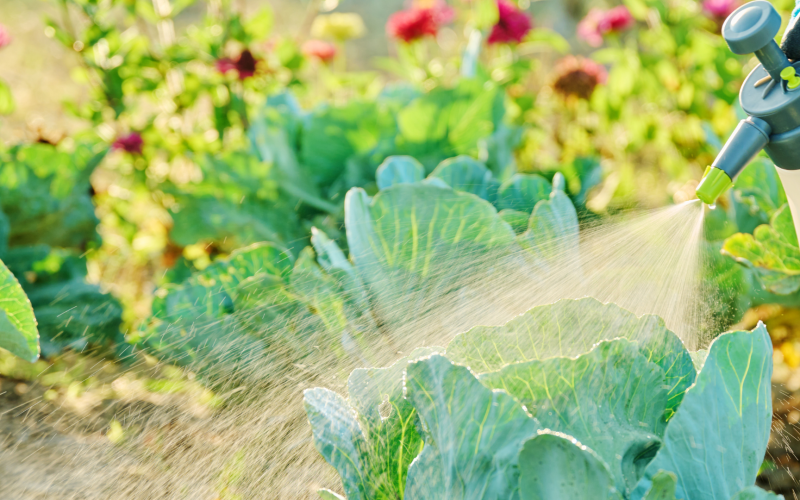Written by Rhoda Burrows, former Professor & SDSU Extension Horticulture Specialist.
Have you been enjoying strawberries from your own patch? Here are some tips for keeping your strawberry plants healthy and productive.
General Care
Strawberries require full-sun. A sandy loam with pH 5 - 7 is optimal, but they can be grown on a variety of soil types, provided the soil is well drained and good quality water is used for irrigation. Irrigate as needed so the plants will receive about an inch of water/week, especially in August during runner development. Don’t use water with a high sodium or salt content for irrigation; artesian water or well water should be used only if you know it is of good quality with under 700-900 ppm salts.
Variety Considerations
Get started by knowing what kind of strawberries you have, Junebearing, Everbearing, or Day-Neutral.
- Junebearing strawberries are the most common type of strawberry grown in South Dakota. These strawberries initiate runners to form new plants during midsummer under long daylengths, and initiate flower buds in the fall under short daylengths. They produce one crop of fruit in the early summer between June and mid-July, depending on the variety. Honeoye, Sparkle, and Jewel are examples of Junebearing types.
- Everbearing strawberries tend to produce most heavily in the spring and less in the fall. They produce fewer runners than Junebearing types. Fort Larame and Ogallala are two popular Everbearing strawberry varieties.
- Day-neutral strawberries are a type of everbearing strawberry that can fruit from June through the first frost. They also form few runners. Under cooler conditions, the Day-neutrals can produce fruit more uniformly throughout the season compared to the everbearing types. However, they do not form flower buds at temperatures above 85° F, so they tend to stop producing during mid-summer heat. Tribute and Tristar are two examples of day-neutral strawberries.

Junebearing Strawberries
Remove all flower blossoms during the first year of the planting to allow the plant to put energy into developing healthy roots and crowns and vigorous runners. In the following years, immediately after the season’s final harvest (and by the end of July), renovate the rows to maintain plant vigor and production. If the planting becomes too dense, berry size and yield are reduced and disease can become a problem. If the beds have become too weedy, consider removing them and establishing a new planting. Otherwise, a broadleaf herbicide such as 2,4-D amine (not ester!) may be applied at this time if there are no other plants nearby that are susceptible to this herbicide. Make sure the herbicide lists strawberries on its label, and be sure to completely read and follow all label instructions.

Within one week after last harvest, mow off the strawberry leaves one inch above the crown. Delaying mowing may result in damage to the new leaves. An old rotary lawn mower may be used to mow the berries if it is raised to the appropriate height. (If beds are weed- and disease-free, mowing may not be necessary.) Cultivate the rows, restoring the row width to 12-18 inches, removing any stray plants. This will provide space for runners to form and become established for the next year. Up to one pound of actual nitrogen (for example, 10 lbs. of 10-10-10 fertilizer) per 100 ft. of row can be applied at this time to promote runner development and establishment. (Don’t apply nitrogen earlier in the spring, as that can cause softened fruit and/or increased disease.)

Flower buds of Junebearing strawberries are formed in early September. These buds can be injured by temperatures below 15°F, so the plants should be mulched to protect them over winter. Studies have shown that once the soil temperature stays below 40°F consistently, the crowns are dormant and mulch can be applied. Straw is preferred since it does not pack down; leaves or grass clippings may smother the plants. Remove the straw in the spring once temperatures stay above 20°F; be sure to remove it before the leaves begin to turn yellow.
Ever-bearing & Day Neutral Strawberries
Remove flower blossoms and any runners that may appear, for about 6 weeks after planting. Once the plants have 5 to 6 fully expanded leaves, the flowers may be allowed to remain and set fruit. In contrast to the Junebearing types, Everbearing/Day-neutral types are most productive their first year, and can be grown as an annual. In fact, most large commercial strawberry fields are now grown as an annual crop. Also in contrast to the Junebearing types, fertilizer for day-neutral strawberries should be applied every few weeks during the growing season (except during the hottest part of the summer).
If you are thinking of establishing new beds, wait until early next spring.


